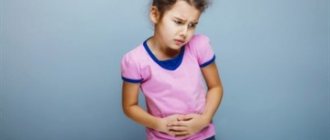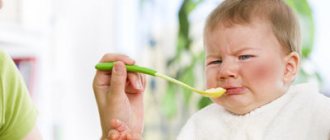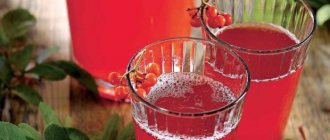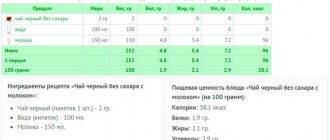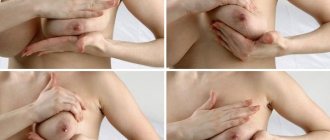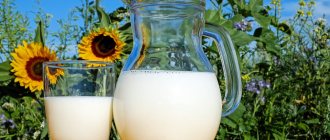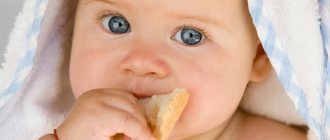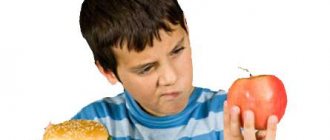Indications for use
Treatment should be prescribed by a doctor after examining the patient. As a rule, non-hormonal medications are prescribed for minor redness. They perfectly moisturize and heal, giving an almost instant effect. The indication for the use of hormonal ointment is the presence of a large number of itchy spots on various parts of the body.
When prescribing a remedy for diathesis in infants, the doctor takes into account its composition. The components of the medicine should not cause an allergic reaction or changes in blood circulation in a small patient. For weeping eczema, the use of lotions with furatsilin or other antiseptic is prescribed. When the sores dry out, you can begin therapy with ointments or creams.
Types of products by allergenic properties
Highly allergenic products This type of product includes eggs, fish, caviar and other seafood, wheat, rye, carrots, tomatoes, peppers, citrus fruits, pineapples, kiwi, mango, pomegranates, persimmons, melon, strawberries, wild strawberries, raspberries; natural coffee, chocolate and cocoa, mushrooms, nuts, honey.
Moderately allergenic products This type of product is considered cow's milk, butter, beef and chicken meat, buckwheat, oats, rice, peas, beans, soybeans, potatoes, beets, peaches, apricots, cranberries, cherries, blueberries, black currants, rose hips.
Low-allergenic products This type of product includes fermented milk products, turkey, rabbit meat, lean pork, refined vegetable oil, millet, pearl barley and corn cereals, cauliflower and white cabbage, zucchini, cucumbers, parsley, dill, green and white apples, pears, red and white currant.
Drinking for childhood diathesis is natural juices diluted with water in a ratio of 1/3. They must be made from fruits and berries that do not cause an allergic reaction. Kissels are not recommended due to their high sugar and starch content.
For children
There are special requirements for children's medications - they must be effective and harmless. Most pediatricians recommend taking into account reviews of medications and using products that have already proven themselves to be positive: Elokom, Lokoid, Afloderm, prednisolone and hydrocortisone ointment. The doctor may recommend diluting hormonal medications several times with baby cream (this depends on the patient’s age). After completing the use of hormonal ointment, treatment with non-steroidal drugs begins.
Desitin
The drug Desitin contains the active component zinc oxide, which has an antiseptic and anti-inflammatory effect. Desitin contains cod liver oil and petroleum jelly. Taken together, the components of the drug form a kind of barrier on the mucous membrane or skin and do not allow irritating substances from the environment to enter the affected area, preventing the appearance of a rash. The drug is especially effective for diaper rash: the result is noticeable the very next day.
Judging by the reviews of users of this product, one can note its pronounced drying, astringent and softening effect. Thus, Desitin protects the baby’s delicate skin from moisture at night, and for signs of mild eczema it is used as an anti-inflammatory and protective agent. Judging by medical reviews, the ointment is not absorbed into the blood and does not harm human health. You should carefully study the information in the instructions for the medicine and check the expiration dates. You can order the drug through the online store, see the price below.
Instructions for use of Desitin
Ointment or cream for diathesis for infants is used to prevent hepatic dermatitis. Apply the product to the baby’s clean skin at night, after which they put on a diaper or wrap it in a diaper. If the baby is already suffering from dermatitis, treatment is carried out three times a day or with each diaper change. When a child takes air baths, it is not recommended to apply ointment. It will not allow the skin to breathe.
Instructions for use of Desitin recommend applying it in a thin layer to the affected areas. To keep the ointment on the skin longer, you can apply a bandage. It is suitable for the treatment of only uninfected and superficial skin lesions, does not interact with other medications, has no risk of overdose, and is sold in pharmacies without a doctor's prescription.
The nature of atopic dermatitis
In order to choose the right diet for atopic dermatitis, you need to know exactly how and why it occurs.
Atopy is a hereditary predisposition to various types of allergies. Whether it is asthma, eczema, allergies and anaphylaxis - these are all manifestations of one syndrome associated with the work of certain cells of the body, activated by the same immunoglobulin E molecules.
Atopic dermatitis is one of the most common allergic diseases that manifests itself during the first 6 months of life.
Scientific research in the field of molecular medicine has now led to an understanding of the biological defects occurring in patients with atopic dermatitis.
The basis of atopic dermatitis is chronic allergic inflammation. A hypoallergenic diet for a child who has received such a gift as an inheritance helps to partially improve the condition.
The development of atopic dermatitis has many factors, but immune disorders play a leading role among them.
The main deviation from the normal state of the immune system and a violation of the immune response during the development of atopic dermatitis are changes in the ratio of Th1/Th2 lymphocytes towards Th2 helper cells, which leads to a change in the cytokine profile and high production of specific IgE antibodies.
In other words, the Th2-dependent immune system becomes unnaturally overactive. And this system is precisely responsible for the destruction of parasites on the mucous membrane and in the intestines, which is accompanied by a massive release of histamine. The latter, in turn, has the same effect on allergies as gasoline on fire. Hence the common misconception that if a child has atopic dermatitis, it means he has worms. However, knowing how the immune system works, it is worth drawing the opposite conclusion: if there are worms, then atopic dermatitis is unlikely to manifest itself.
Bepanten
Bepanten lotion, ointment or cream are prescribed individually to normalize metabolism in the skin. Bepanten is effective and harmless for diathesis, and therefore is often used to treat very young patients. A drug:
- has a non-greasy base;
- absorbs well;
- has a cooling and analgesic effect;
- removes irritation;
- soften, acting better than purely cosmetic formulations;
- prevents infection.
Instructions for use
As a preventive measure, the parent should apply the product after washing the baby. Such care for your child will prevent peeling and the formation of prickly heat. The use of the drug is considered effective for dry skin and minor damage. However, the instructions for using Bepanten for diathesis indicate that it is relevant only at the initial stage of the disease and only if a more suitable remedy is not available, because the moisturizing effect of Bepanten does not last long.
Theory four: worms
The next theory suggests that allergies occur as a result of the activity of immune system cells responsible for fighting worms. In ancient times, the immunoglobulin E-dependent system waged an endless fight against parasites of all kinds. There was no time left for tick excrement or cat hair. Today, in the era of central water supply, this system is not occupied with anything and is hypersensitive to any irritants.
What all scientists agree on is that the appearance of allergies is due to genetic predisposition, in other words, heredity.
Fenistil for babies
The drug has the property of blocking histamine receptors and eliminating manifestations of allergies, therefore it is often used for diathesis, dermatitis, allergies, skin itching, swelling and eczema. Fenistil for diathesis in infants is prescribed in the form of gel and drops. The effect of the drops occurs two hours after administration, and six hours later the drug is completely eliminated from the body. The action of the gel, unlike drops, is much faster. 20 minutes after applying it to the affected area, the baby will feel relief, while no more than 10% of the drug penetrates into the blood.
- Planting cucumbers in 5 liter bottles
- How to pickle trout deliciously
- Lizobakt - instructions for use and reviews
Instructions for use
It is recommended to apply the gel sparingly, and by applying it to healthy skin, you can increase the percentage of absorption of the drug. Instructions for use of Fenistil for diathesis in infants in the form of drops recommend using the product from the age of 1 month once a day. The drops have a pleasant taste; if necessary, they are diluted in water or milk. Given the systemic sedative effect of the drug, it should be given to the baby before bedtime.
Methods to combat diathesis
Drug treatment of diathesis
Treatment with medications is aimed at reducing itching, redness, and irritation. Sedatives and vitamins should only be used with the approval of a physician.
Local treatment of diathesis
For diathesis, local treatment is prescribed - ointments, baths, lotions. For lotions and baths, use decoctions of oak bark, string, and celandine. A weak solution of potassium permanganate relieves itching and soothes the child's skin. A good effect is achieved by wiping the child’s body with a decoction of bay leaves.
Proper nutrition for diathesis
Proper and reasonable nutrition is the main way to solve the problem. It is important both for preventive purposes and during exacerbation of the disease.
From two months, a baby who is breastfed or bottle-fed begins to be given additional complementary foods. It is important to follow some rules to avoid negative manifestations of diathesis.
You can add no more than one new product per week. If the body does not accept the new bait, it should be discontinued. You can return to this product after three months, if there is no exacerbation of diathesis.
Complementary foods are offered at the end of feeding, during the main meal.
The dose of a new product should be increased gradually.
As a new product, try to use juices, purees, and cereals from special children's food stores. They are designed for young children and must be carefully processed.
These rules allow the baby’s body to gradually get used to new foods, which makes it possible to avoid diathesis.
Product classification
For children suffering from diathesis , a special menu is prepared. The diet menu includes foods that are least likely to cause a negative reaction in the body. However, you should take into account the individual characteristics of each organism and, through careful introduction of products, create your own individual menu.
It is recommended not to include in the diet for diathesis: • Fatty fish, caviar, seafood; • Eggs, poultry, veal, smoked products, canned food; • Whole milk products, cheeses; • Vegetables, berries and fruits of red-yellow color, citrus fruits; • Honey, mushrooms, nuts, sweet and flour products, spices and herbs. Use the following foods with caution: • Pike perch, hake, fatty pork, turkey, lamb; • Yoghurts; • Green peppers, potatoes, legumes, peas, herbal infusions; • Bananas, peaches, apricots, watermelons, cranberries; • Cereals, buckwheat, corn.
Recommended products for diathesis: • Cod, sea bass; • Lean pork, rabbit, offal; • Kefir, fermented baked milk, butter; • Cabbage, zucchini, greens, cucumbers, rutabaga, turnips; • Green apples, pears, currants, gooseberries; • Rice, oatmeal and pearl barley, vegetable oils, bread.
Diet menu
When creating a menu for diathesis for a child , pay attention to the following points: When cooked, many products reduce their allergenic properties. It is recommended to soak peeled potatoes in water for several hours. The presence of lactic acid in fermented milk products promotes the absorption of calcium, which in turn reduces the manifestations of diathesis. In case of complete intolerance to milk, it should be replaced with nutritional mixtures based on vegetable soy protein (soy milk). In this case, cottage cheese should be consumed with caution.
Juices and purees based on fruits and berries begin to be given from 2 months of age, a few drops at a time. For this you can use green apples, pears, currants, peaches, and bananas.
Egg yolk is offered to the baby in the second half of the year, starting with the sixth part of the yolk.
Vegetable puree is prepared from one vegetable, for example, zucchini or cabbage, gradually adding one vegetable at a time. You can give rutabaga, other varieties of cabbage, turnips. The puree is given from a teaspoon, bringing it up to 150 grams in a week. Gradually begin adding vegetable oil to the vegetable puree. The oil helps reduce allergies and skin diathesis.
Porridge is given from 4 months of age. Usually they cook oatmeal and buckwheat. It is not recommended to give semolina and rice. If a child does not tolerate milk well, porridge is cooked with decoctions of vegetables or fruits. The cereal is pre-soaked.
Due to a lack of protein, meat is added to the child’s menu in the first half of the year. The meat used is beef, rabbit, and young lamb. The meat is boiled twice, the broth is drained, the meat is placed in boiling water and cooked until tender. During cooking, the extractives evaporate. Fish, mushroom and meat broths are contraindicated for children with exudative diathesis.
At the age of six months, kefir is added to the child.
Drinks include weak tea, compote of apples, pears, and dried fruits.
Approximate diet of a 2-month-old breastfed child with exudative diathesis
6 hours
Infant formula - 10 ml, breast milk - 140 ml.
9 hours 30 minutes
Infant formula - 20 ml, breast milk - 130 ml.
13:00
Infant formula - 20 ml, breast milk - 110 ml, applesauce - 20 g.
16 h 30 min
Infant formula - 20 ml, breast milk - 130 ml.
19:00
Infant formula - 20 ml, breast milk - 110 ml, apple juice - 20 ml.
22 h.30 min
Infant formula - 10 ml, breast milk - 140 ml.
———————-
Zinc ointment
This drug is good because it is completely safe for pregnant women and newborns. It heals skin damage, disinfects and dries, protects the baby’s skin from ultraviolet radiation, and treats prickly heat. Zinc ointment is relevant for diathesis, diaper dermatitis, diaper rash, small wounds, cracks and cuts. Duration of use – no more than a month. If it is necessary to continue therapy, another drug is selected.
The ointment is applied to sore spots up to 5 times a day in small doses. It is recommended to do this while swaddling. In case of severe damage to the skin, bandages with ointment should be applied. The baby's skin is cleaned and dried, then the drug is carefully applied. The paste can dry out, so after using it it is recommended to use a moisturizer or additionally dilute the paste with it 1:1.
Causes of diathesis
A predisposition to diathesis can develop even before the baby is born. There are several main factors that provoke the disease:
• heredity; • environmental influence; • problems during pregnancy, toxicosis; • drinking alcoholic beverages, smoking by the expectant or nursing mother; • use of medications during pregnancy; • excessive consumption of highly allergenic foods by a nursing or pregnant woman. After birth, the main reason for the occurrence of diathesis is the lack of a balanced, reasonable diet, both in the child and in the nursing mother.
For adults
Modern medicine, as the main treatment for diathesis in adult patients, suggests taking antihistamines in the form of drops (Fenistil) or tablets (Suprastin) and dermatotropic agents for external treatment. Most often, Elidel cream or 0.1% ointment is prescribed. It is used twice a day until complete healing.
If you have an allergic reaction, your legs and arms may swell. To alleviate this condition, proceed as follows:
- Prescribed 0.1% Fenistil gel, Diprosalik, Akriderm cream or ointment, Flucinar, Elokom or Videstim. All of them reduce itching, remove swelling and redness. The drugs should be used in courses and strictly according to the instructions.
- To speed up healing, it is recommended to take vitamins C, A, B6 simultaneously with the above remedies. They can be found in a pharmacy or bought in an online store at a low price: just study the catalog of products before purchasing.
Theory three: cleanliness is harmful to health
People who are dirty, who don’t like to wash their hands, blame obsessive hygiene for everything.
There is a theory that the cleaner the child's environment, the more likely he is to develop allergic reactions. It has been observed that children who have an older brother or sister suffer less from allergies. Most likely, this happens because such a child is exposed to street dirt and dust from infancy.
Scientists think that for the normal development of the immune system, the body needs contact with bacteria, especially soil bacteria.
Hormonal ointments
There are cases when there is no effect from the use of non-hormonal drugs, then the doctor may prescribe a hormonal drug. This is undesirable for the child’s body, but synthetic glucocorticoids provide an almost instant effect. They remove inflammation from dermatitis and eczema, but with prolonged use they can harm the baby’s health, so moderation is necessary in everything. It is especially undesirable to use drugs that are well absorbed into skin cells and enter the blood.
In most cases, the following treatments are prescribed:
- Elokom for babies. Suitable for patients over six months and used only as prescribed by a specialist (has contraindications). The duration of treatment is no longer than a week. The drug is applied to a maximum of one-eighth of the skin area.
- Advantan is prescribed from 4 months and only by a specialist. Long-term use of the drug can have a side effect - atrophy of the upper layer of skin.
Hypoallergenic diet after the introduction of complementary foods
A child who is fed breast milk should be introduced to new foods no earlier than 6 months of age. You should start with vegetable purees: zucchini, cauliflower and broccoli. After a month, switch to dairy-free cereals, and at 7–8 months – to dietary meat. At the same time, the mother should keep a food diary and note all the child’s reactions to new foods.
The diet for formula-fed babies and mixed-fed children allows earlier complementary feeding: from 4.5–5 months – vegetable purees, from 5–5.5 months – porridge with soy mixture or hydrolyzate, from 6–6.5 months – meat puree.
In the diet of children suffering from diathesis, cheese, chicken eggs (both whites and yolks) and fish are prohibited. They can be introduced after one year of age, but if there is a negative skin reaction, the experiment should not be repeated. You should also not give drinks containing flavorings.
How to choose an ointment for diathesis
Self-medication is always dangerous, especially when it comes to children. The drug should be prescribed by a qualified doctor, because if you use the wrong drug, you can provoke the development of allergies on the baby’s skin. The specialist will prescribe medication after assessing the symptoms - the cause of the rash may not be diathesis. Only a professional will help you choose the right ointment for diathesis and prescribe its dosage according to the baby’s age.
Many mothers are prejudiced against hormonal drugs, but meanwhile they can quickly solve problems, you just need to use them correctly. Hormonal ointments are used for severe symptoms of diathesis and itching. If the problem is only dryness and inflammation of the skin, preference is given to non-hormonal agents.
Battle of the sexes
People often associate their predisposition to allergies with their mother's illness. This is explained by the fact that in men, allergies, as a rule, appear in childhood and completely disappear in adulthood, while in women it is the opposite. It appears in adulthood and never goes away. Which leads to the conclusion that the mother is to blame for the appearance of an allergic child. Although no one has canceled the father’s genetic mutation. It just stopped showing itself outwardly, but it was probably passed on to the child. A hypoallergenic diet for children (3 years and older) that comes to the rescue only slightly corrects the situation, but is often distressing with relapses.
Price
Please see the table for the approximate cost of medications:
| Name of product | Price in rubles |
| Elokom 0.1% 15 g | 350-365 |
| Lotion Elocom 30 ml | 200-210 |
| Cream Elokom 15 g | 355-370 |
| Lokoid 0.1% 30 g | 300-310 |
| Cream Lokoid 0.1% 30 g | 330-350 |
| Afloderm 0.05% 40 g | 520-540 |
| Afloderm 0.05% 20 g | 400-410 |
| Prednisolone ointment 0.5% 10 g | 15-20 |
| Hydrocortisone ointment 1% 10 g | 25-30 |
| Cream Desitin 50 ml | 270-290 |
| Bepanten 5% 100 g | 770-790 |
| Fenistil gel 0.1% 50 g | 520-535 |
| Zinc ointment 10% 30 g | 30-40 |
| Diprosalk 30 g | 635-640 |
| Akriderm 30 g | 125-130 |
| Flucinar 0.025% 15 g | 225-230 |
| Advantan 0.1% 50 g | 1100-1200 |
